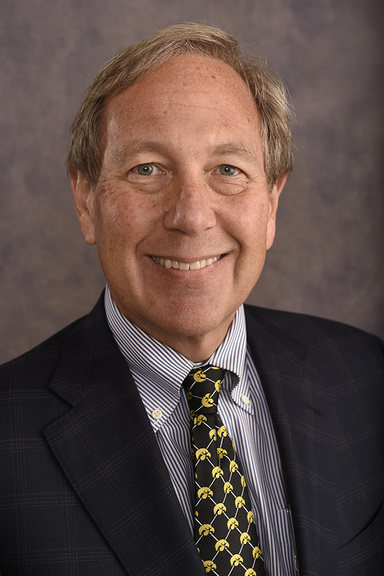
It’s hard to believe, but the fall semester is only a month away. Already, I can picture the hustle and bustle of move-in and new Hawkeyes finding their way to their classes for the first time, settling into the swing of college life. And I’m thinking of all of the new experiences they will have, the exciting trails they will blaze for themselves at the University of Iowa. There are countless ways to navigate a university experience. That’s quite possibly the most important thing the UI provides—the opportunity for students to find their own path, to set their own milestones on the road of life. And what allows them to do that is the work of our outstanding faculty who will help our students on their journey.
It’s clear to me that faculty research and scholarship are the keys to our students’ success. When UI faculty pursue their academic interests, they not only expand our knowledge about everything from Iowa’s watershed to Bronze Age archaeology but also inspire students to follow their own passions. Critical to the educational process is a faculty that has been out there in the thick of it, that has dealt with and overcome the challenges of difficult and worthwhile research. These seasoned scholars teach students not just what they have discovered but how they have discovered it. That “how” isn’t limited to the research process itself; Iowa faculty advise their students about academics, but they also teach them about building a fulfilling life.
That process often hinges on collaboration between scholars and students. When faculty researchers and undergraduates work together, they’re able to get to know one another. Collaboration like this is where students can truly see the spark of their mentor’s interest in a subject, their passion for the work. And in order to learn a craft, it’s important to practice it. I think of projects like the UI Museum of Natural History’s ornithology collection upgrade, in which students are coordinating with museum workers to reorganize and rehouse the UI’s entire inventory of bird, egg, and nest specimens. Practically, the UI’s collection gets a new, state-of-the-art home. But just as important, students get hands-on museum experience working with a skilled UIMNH team.
Likewise, at the National Advanced Driving Simulator and at the Center for Computer Aided Design, undergraduates are working side-by-side with researchers. Students at NADS are creating detailed driving simulations to improve vehicle safety, and the CCAD team continues to perfect a virtual model of a soldier, SANTOS™, to help prevent military injuries. An equally important part of both efforts is the fact that they are training the next generation of researchers, assuring that the scope of this vital work will stretch into the future.
The UI has had a lot of practice with this sort of mentorship. Take the Department of Physics and Astronomy, which has actively sought undergraduate participation in its research for a generation or more. Don Gurnett, who now teaches undergraduates as they design instruments for NASA, was himself involved in undergraduate research at the UI; he worked with famed space pioneer James Van Allen on numerous projects that expanded our understanding of the universe and secured America’s (and Iowa’s) place in the history of space science.
There is an unbroken chain of cutting-edge scholarship and thoughtful mentorship at the UI. Now we must maintain that tradition. We must continue to retain and attract the best scholars and researchers in their respective fields in order to honor the legacy of those who have come before us and uphold our responsibility to those who will come after. With highly capable faculty come highly capable students and graduates. This juncture in the UI’s history cannot be a weak link in the chain. Having seen the work of our students and colleagues, I don’t think it will be.